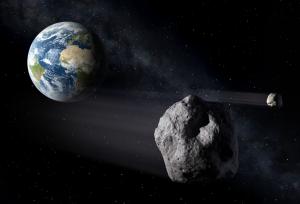
Stargazing Nights
- Where:
- Frosty Drew Observatory
- When:
- Friday February 9, 2018 at 6:00 p.m
- Cost:
- $1 Suggested Donation per Person
Tonight is Stargazing Night at Frosty Drew Observatory and forecasts are calling for cloudy skies. Sadly, this is happening on a night with no Moon until the early morning hours brings the 23% waning crescent. There is a small chance that we may see partial clearings earlier in the night, though this is bordering on wishful thinking.
We will open the Observatory and Sky Theatre tonight at 6:00 p.m. In the Observatory telescopes will start off on standby with hopes for brief clearings and sneak peeks. If weather doesn’t cut us a break, we will be in the Sky Theatre offering a commentary alongside our showcase of celestial objects photographed at Frosty Drew Observatory. We’ll stay open until 9:00 p.m.
Overall, tonight’s forecast for cloudy skies will certainly make this a night to skip. If you’re looking for a quick astro-fix, then stop in and and chat with our astronomers about all that’s happening in astronomy. Otherwise, we’ll see you next Friday, February 16th for another night of moonless skies.
----------------------
Weekly Happenings
Scott MacNeill
If you have clear skies tonight, be sure to step out around 6:11 p.m. EST and look to the NW horizon. The International Space Station (ISS) will be rising into the twilight sky, making a fabulous pass across the sky, heading towards the East. If you miss out on tonight’s pass, step out again tomorrow evening (Saturday) at 6:56 p.m. EST and look to the WNW to catch a better pass of the ISS passing nearly overhead and into orbital sunset, which will cause the station to fade out of view before dropping below the horizon. Though Sunday evening will bring the best of the weekend passes! Starting at 6:03 p.m. EST, the ISS will rise in the NW and pass overhead, setting 6.5 minutes later in the ESE. Though weather in Southern New England is not favorable for sky watching this weekend, these passes are fabulous. So make an attempt to catch sight of at least one of them, if not all. Note: these times are applicable to Southern New England and will generally be acceptable for the New England area. For specific pass times over you location, check out NASAs Spot the Station.
This past Tuesday, February 6, 2018, SpaceX successfully launched the Falcon Heavy rocket from the Kennedy Space Center in Florida. Though only a test, the Falcon Heavy now claims the most powerful operational rocket in the world. SpaceX utilizes re-usable rockets and one of the goals of this test was to successfully land all three rockets used during the first stage. The two side rockets have been previously used to launch a satellite and a resupply mission to the ISS. Upon separation of the first stage, the two side rockets successfully landed, though the center rocket was lost. The launch payload was comprised of SpaceX CEO, Elon Musk’s red Tesla Roadster, which is now on its way to Mars (a rather Tony Stark-like flair). Check out this video of the launch with the actual liftoff happening at the 22:00 mark. Then check out Elon Musk’s Tesla assume its new spacecraft role (the view is amazing!).
This past week has been a rock star week of Near Earth Asteroid (NEA) passes. Though not uncommon for NEAs to pass Earth, this week brought two notable NEAs into the Earth – Moon system and a third, quite large asteroid, within 10 lunar distances. The first asteroid, 2002 AJ129, which has a diameter of around half a mile, passed Earth at a distance of 2.6 million miles (10 times the distance of the Moon) on Sunday, February 4th. Then on Tuesday, February 6th, asteroid 2018 CC squeaked by at half the distance of the Moon (114,000 miles). 2018 CC measures in at around 55 feet in diameter. Today, another NEA will swing past Earth, this time at a distance of 39,000 miles (about 20% of the Moon’s distance from Earth). Asteroid 2018 CB measures about 75 feet in diameter and will pass around 5:30 p.m. EST. Though no impact threat exists for today, these passes serve as a reminder that NEAs similar to the asteroid that exploded over Chelyabinsk Russia, which happened in February 2013, pass quite frequently, with detection often happening after the asteroid has passed Earth. Large asteroids like 2002 AJ129 are nearly all known, and no imminent large impact threat currently exists - sorry doomsayers. Though asteroids like the Chelyabinsk asteroid can certainly cause enough trouble to justify better detection and mitigation methods.
-Scott



